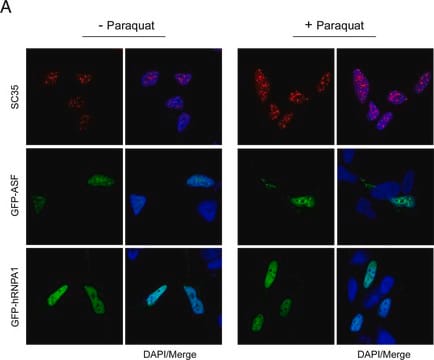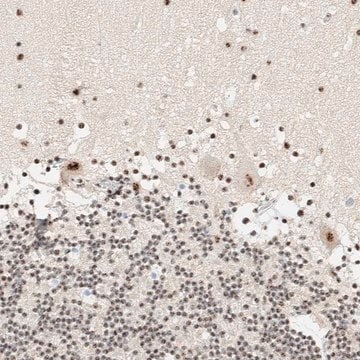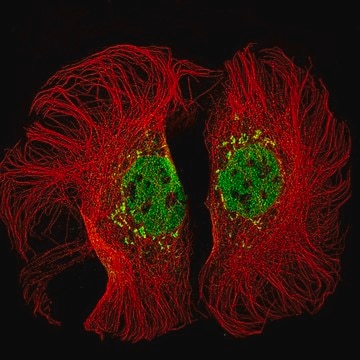04-1572-I
Anti-RNA polymerase II subunit B1 (phospho-CTD Ser-5) Antibody, clone 3E8
culture supernatant, clone 3E8, from rat
Sinónimos:
DNA-directed RNA polymerase II subunit RPB1, RNA polymerase II subunit B1, DNA-directed RNA polymerase II subunit A, DNA-directed RNA polymerase III largest subunit, RNA-directed RNA polymerase II subunit RPB1
About This Item
Productos recomendados
biological source
rat
Quality Level
antibody form
culture supernatant
antibody product type
primary antibodies
clone
3E8, monoclonal
species reactivity
mouse
species reactivity (predicted by homology)
human (immunogen homology)
technique(s)
ChIP: suitable
ELISA: suitable
western blot: suitable
isotype
IgG2aκ
NCBI accession no.
UniProt accession no.
shipped in
dry ice
target post-translational modification
phosphorylation (pSer5)
Gene Information
human ... POLR2B(5431)
General description
Specificity
Immunogen
Application
ELISA Analysis: A representative lot was used by an independent laboratory to detect RNA polymerase II subunit B1 (phospho-CTD Ser-5) in ChIP (Chapman, R., et al. (2007). Science. 318(5857):1780 -1782.).
Epigenetics & Nuclear Function
Transcription Factors
Quality
Western Blot Analysis: A 1:2,000 dilution from a representative lot detected RNA polymerase II subunit B1 (phospho-CTD Ser-5) in 10 µg of untreated and lambda phosphotase treated NIH/3T3 cell lysates.
Target description
Linkage
Physical form
Storage and Stability
Handling Recommendations: Upon receipt and prior to removing the cap, centrifuge the vial and gently mix the solution. Aliquot into microcentrifuge tubes and store at -20°C. Avoid repeated freeze/thaw cycles, which may damage IgG and affect product performance.
Analysis Note
Untreated and lambda phosphotase treated NIH/3T3 cell lysates
Disclaimer
Not finding the right product?
Try our Herramienta de selección de productos.
Storage Class
10 - Combustible liquids
wgk_germany
WGK 1
Certificados de análisis (COA)
Busque Certificados de análisis (COA) introduciendo el número de lote del producto. Los números de lote se encuentran en la etiqueta del producto después de las palabras «Lot» o «Batch»
¿Ya tiene este producto?
Encuentre la documentación para los productos que ha comprado recientemente en la Biblioteca de documentos.
Nuestro equipo de científicos tiene experiencia en todas las áreas de investigación: Ciencias de la vida, Ciencia de los materiales, Síntesis química, Cromatografía, Analítica y muchas otras.
Póngase en contacto con el Servicio técnico







